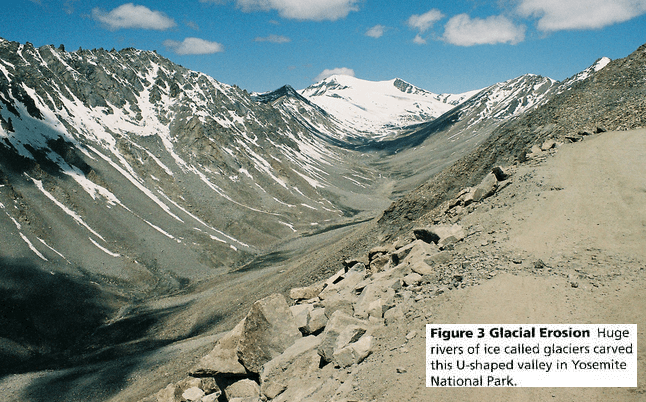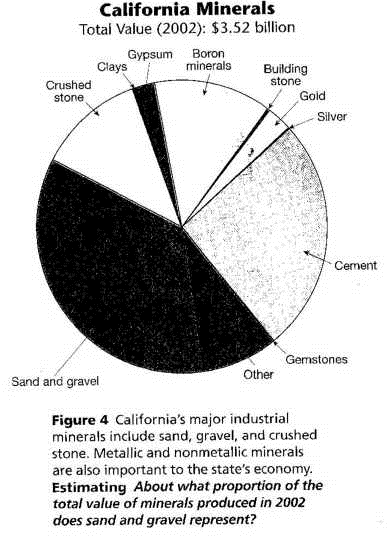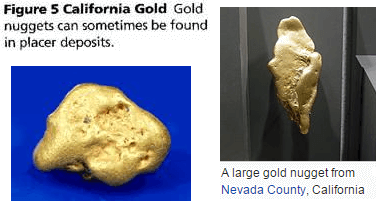 Each of California‘s regions is defined by the major geology facts and features within that region. Some of the features of the California landscape formed as the result of tectonic processes that took place deep beneath the surface. Wind, water, ice, and other agents of erosion at die surface carved other features of the landscape and maps.
Each of California‘s regions is defined by the major geology facts and features within that region. Some of the features of the California landscape formed as the result of tectonic processes that took place deep beneath the surface. Wind, water, ice, and other agents of erosion at die surface carved other features of the landscape and maps.
Geologic Processes Inside Earth California’s scenic mountains attract visitors from around the world. But the mountains are not just beautiful; they also provide a record of California’s geologic history.
Interactions between tectonic plates built the mountains in California. Millions of years ago, the subduction of an oceanic plate beneath the North American plate formed large pools of magma. Some of the magma crystallized beneath the surface to form large masses of igneous rock. Uplift and erosion eventually exposed these batholiths, which form the Sierra Nevada. East of the Sierras, the subduction of the oceanic plate produced stresses that caused faulting. Movements along these faults formed the Basin and Range mountains.
Subduction of the Juan de Fuca plate beneath the North American plate produced the volcanoes in the Cascade Range, including Mount Shasta and Lassen Peak. The Coast Ranges, too, are the result of plates moving together. The Coast Ranges formed as large slabs of crust were accreted, or stuck, onto the North American plate.
The tectonic forces that uplifted mountains also caused other changes. A transform boundary—the San Andreas Fault—formed in southern California. Along this boundary, the Pacific plate is moving northward relative to the North American plate. In other parts of California, faulting caused other portions of crust to drop down, producing basins. The Central Valley and the Basin and Range region were formed through this process.
Surface Geologic Processes Tectonic forces built up California’s landforms over millions of years. At the same time, flowing water, glaciers, and wind reshaped the surface through erosion and deposition.
 Deposition of sediment produced landscapes as diverse as the Mojave Desert and the Central Valley. Deserts generally have few plants to protect the land surface from erosion. As a result, deserts often have unusual landforms produced by water and wind. For example, the Mojave Desert includes areas of large sand dunes shaped by the wind. The Mojave also has flat, dry lake beds known as playas, where mineral salts form by evaporation.Glacial ice has also shaped California’s landscape. Thousands of years ago, massive glaciers covered the mountainous regions of the state. As these glaciers advanced and retreated, they carved mountain peaks and vast U-shaped valleys, like the one shown in Figure 3.Water erosion shaped the state’s mountains, hillsides, and river valleys. Rivers that begin in the Sierras, for example, cut steep-sided, V-shaped valleys where they flow through the mountains. On valley floors, however, the rivers flow slowly, producing meanders and leaving thick alluvial deposits.
Deposition of sediment produced landscapes as diverse as the Mojave Desert and the Central Valley. Deserts generally have few plants to protect the land surface from erosion. As a result, deserts often have unusual landforms produced by water and wind. For example, the Mojave Desert includes areas of large sand dunes shaped by the wind. The Mojave also has flat, dry lake beds known as playas, where mineral salts form by evaporation.Glacial ice has also shaped California’s landscape. Thousands of years ago, massive glaciers covered the mountainous regions of the state. As these glaciers advanced and retreated, they carved mountain peaks and vast U-shaped valleys, like the one shown in Figure 3.Water erosion shaped the state’s mountains, hillsides, and river valleys. Rivers that begin in the Sierras, for example, cut steep-sided, V-shaped valleys where they flow through the mountains. On valley floors, however, the rivers flow slowly, producing meanders and leaving thick alluvial deposits.
The Central Valley lies between the Coast Ranges and the Sierra Nevada. The valley began as an inland sea. Then the land on both sides was uplifted to form the Sierras and the Coast Ranges, leaving a basin in between. Over millions of years, this basin filled with huge amounts of sediment washed down from the nearby mountains.
California’s Mineral Resources
California’s geology has resulted in a wealth of mineral resources, including industrial, metallic, and nonmetallic minerals. These minerals are important to the state’s economy. The term mineral resources includes minerals plus various types of rocks and sediment it also includes products made from these materials. California’s major mineral resources include sand, gravel, crushed stone, building stone, gold, silver, iron, evaporite minerals, and clay. (An evaporite is a mineral formed as a solution containing dissolved salts evaporates. Evaporation causes the concentration of salts in the solution to increase, and the mineral begins to precipitate.) As you read, think about how you use these resources every day.
Industrial Minerals
You may be surprised to learn that sand and gravel are California’s most valuable industrial minerals. The graph in Figure 4 shows their contribution to the state’s economy. These mineral resources are used in road-building and construction. Most sand and gravel is mined from alluvial deposits, which include sediment from streams and alluvial fans. Alluvial fans form when a stream flows out of a mountain canyon, spreads out, loses velocity, and deposits sediment.
Some of California’s limestone is quarried in large slabs that are used to construct buildings. Other sedimentary rocks, including sandstone and shale, provide decorative building stone.Another important industrial mineral of California is crushed stone. Most of the crushed stone is limestone that is used to make cement. Most limestone forms from the shells and skeletons of marine organisms. California’s limestone formed millions of years ago when parts of the state were covered by the Pacific Ocean.
Much of the granite quarried in California is from the Sierra Nevada batholith. Because of its hardness and beauty, the granite is used for building stone, counter tops, and cemetery markers.
Deposits of minerals containing iron formed in areas where magma heated rock and water beneath the surface. This heating produced hot water solutions that were rich in iron. As the solutions cooled, iron minerals were deposited in fractures in the rock. While not as rare as gold and silver, iron is an important metal from the Mojave Desert region.
Metallic Minerals
 Gold, silver, and iron are the major metallic minerals mined in California. Gold and silver often occur in quartz veins in igneous and metamorphic rocks that formed during mountain building. When moving water and ice weather the veins, the gold and silver may collect to form placers. Recall that placer deposits form when dense minerals settle out of moving water. Placer deposits of gold include large particles called nuggets, like those shown in Figure 5. The most productive gold mining areas in California today include the Sierra Nevada, the Klamath Mountains, and the Mojave Desert. Silver is mined in the Sierra Nevada.
Gold, silver, and iron are the major metallic minerals mined in California. Gold and silver often occur in quartz veins in igneous and metamorphic rocks that formed during mountain building. When moving water and ice weather the veins, the gold and silver may collect to form placers. Recall that placer deposits form when dense minerals settle out of moving water. Placer deposits of gold include large particles called nuggets, like those shown in Figure 5. The most productive gold mining areas in California today include the Sierra Nevada, the Klamath Mountains, and the Mojave Desert. Silver is mined in the Sierra Nevada.
Nonmetallic Minerals California has an abundance of mineral resources in addition to metals. Three of the most significant are borates, gypsum, and clay.
Everyday materials such as fiberglass, detergents, glass, ceramics, and insulation often contain borates. Borates form when water rich in the element boron flows into desert lakes and evaporates. The boron that is left behind combines with oxygen to form borates. Borates are mined in southern California.
Gypsum, a compound of calcium, sulfur, and oxygen, forms when salt water evaporates. It also forms when sulfur-rich waters evaporate in caves and around hot springs. Much of the gypsum mined in California is used in wallboard, plaster, and cement.
Clay minerals are a group of silicates that contain water. Most of the clay deposits in California formed from weathered feldspar. Clay is used in ceramics and in building materials such as bricks.
Gemstones Gemstones form when mineral-rich solutions crystallize deep underground. Small quantities of gemstones, such as tourmaline, garnet, agate, and jade, are found in California. The state gem, benitoite, is a deep blue mineral found in the Diablo Range in San Benito County.
- Rapid Excavation and Tunneling Conference Proceedings Chapter Sections
- Geology and Development of the Paloma Field, Kern County California
- Geology of the Exposed Treasure Lode, Mojave, California
- The Mojave Mining District of California
- Mojave sustainability project — model for community partnerships
- MINERAL SURVEY OF USA CALIFORNIA KERN COUNTY MOJAVE DISTRICT THE GOLDEN QUEEN
